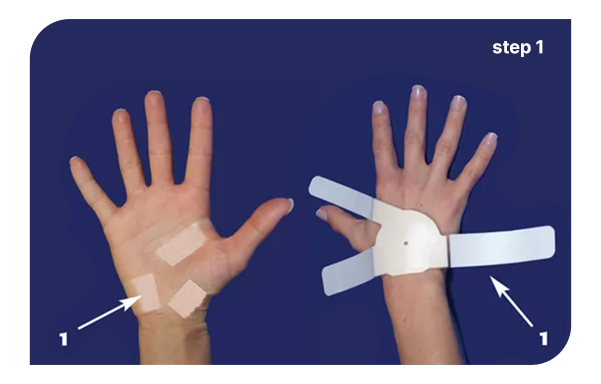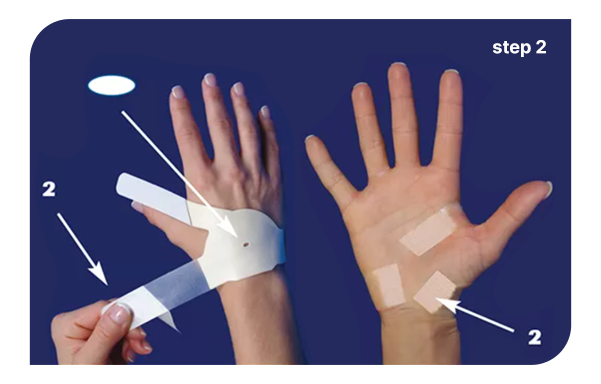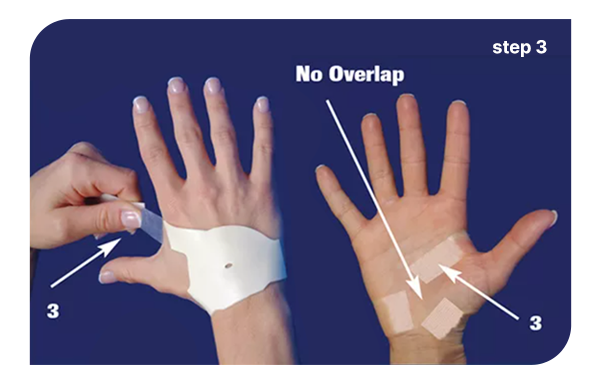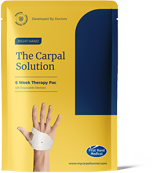Home Remedy For Carpal Tunnel Syndrome
Frustrated, proactive people who suffer with Carpal Tunnel Syndrome will go to great lengths to relieve the hand pain, numbness and sleep interruption associated with their condition and rightly so, since the complications to one’s health and livelihood resulting from chronic sleep loss and hand dysfunction can be devastating.


By Dr. Michelle Robin DC, Wellness Expert, Founder of Your Wellness Connection, Naturopath

Home Remedy For Carpal Tunnel Syndrome
Frustrated, proactive people who suffer with Carpal Tunnel Syndrome will go to great lengths to relieve the hand pain, numbness and sleep interruption associated with their condition and rightly so, since the complications to one’s health and livelihood resulting from chronic sleep loss and hand dysfunction can be devastating.


By Dr. Michelle Robin DC, Wellness Expert, Founder of Your Wellness Connection, Naturopath

Doctors’ Advice
Given that 25 million Americans and over 75 million more people worldwide suffer from some form of carpal tunnel syndrome according to recent estimates, it’s no surprise that more and more home therapies and devices are hitting the market.
 In fact, research shows that most people prefer a remedy they can apply successfully in the comfort and privacy of their own homes that avoid surgical procedures and the complications of oral pain medications. What most busy people want to avoid most is downtime. Yet how do these home treatments stand up to the harsh light of clinical research?
In fact, research shows that most people prefer a remedy they can apply successfully in the comfort and privacy of their own homes that avoid surgical procedures and the complications of oral pain medications. What most busy people want to avoid most is downtime. Yet how do these home treatments stand up to the harsh light of clinical research?
While the majority of home CTS Home Remedies have not been subjected to rigorous scientific analysis, the Carpal Solution was developed by a physician working with his patients and has undergone rigorous clinical testing and trials which have demonstrated an astonishing 97 percent patient satisfaction rate. It was also evaluated by the Eureka Medical Panel (made up of experienced surgeons and leading medical professionals) and was awarded the top home health product in 2004.
What is Carpal Solution Therapy? How is it Different from other Homeopathic Treatments on the Market?
People often find that the best way to solve any problem is applying gentle pressure consistently in the right way. This absolutely applies to soft tissue and repetitive stress injuries like Carpal Tunnel Strain.
The Carpal Solution is the preferred Alternative Medical Protocol by most people suffering from CTS, because it is so simple to use and it works quickly to eliminate the worst symptoms and put the condition into remission in just Six Weeks of treatment at home during sleep. What could be more convenient?
The Carpal Solution is a comfortable wrist brace designed to stretch soft tissue and reshape it gently and consistently over a six week protocol. As such it relieves pressure on the Median Nerve in the comfort of one’s own home at night during sleep. Could any therapy be less invasive than being treated for a chronic syndrome which usually requires surgery, at home while sleeping?
Because the Carpal Solution is so convenient, it offers CTS sufferers a natural, safe and consistent therapeutic method that is efficacious and minimally invasive – hitting the sweet spot for which the well-informed health care consumer is looking.
The device works by pulling the hand at three critical points on the palm at the base of the hand to help massage, loosen, stretch and enhance natural healing of injured and inflamed tissue.
Musculoskeletal therapists are generally unsurprised that the Carpal Solution is so effective at treating CTS naturally. Unlike immobilizing wrist supports, cortisone shots, or carpal release surgery, the Carpal Solution slowly but dramatically reshapes tissue and enhances the body’s own remarkable healing power by increasing blood circulation directed right at the injury, avoiding the pitfalls and risks associated with conventional procedures.
The Carpal Solution is Self-Applied Before Retiring to Bed in Three Easy Steps

STEP 1: Place the Carpal Solution on the Back of the hand as shown with adhesive side down. Attach 1st strap below little finger securing it on the palm. Tear away excess tape to prevent overlap of straps on palm.

STEP 2: Self apply the appropriate tension to the Carpal Solution with 2nd strap below the thumb and attached on palm side of hand as shown. Adjust tension by stretching circular hole on back of hand in the elastic centerpiece to an oval shape. The diameter should be at least 1.5 times the original.

STEP 3: Self apply the appropriate tension to the Carpal Solution with 3rd strap above the thumb. Tear-away straps should be aligned so there is no overlap of straps on palm side of hand. The Carpal Solution begins to relieve symptoms usually within twenty minutes of placement.

ORDER THE CARPAL SOLUTION NOW
The ONLY treatment for carpal tunnel that comes with a no questions asked money-back guarantee and in-house dedicated pain relief team.
Patients call it “My Carpal Tunnel Cure!”
Take control of your condition before the numbness, soreness, and frustration associated with CTS compromises your active life. Endorsed by physicians and musculoskeletal specialists globally, the Carpal Solution is a key component of a natural hand health strategy. The Carpal Solution is a Home Remedy that works! Order today!
The Carpal Solution is a home remedy that has been used by over 81,000 people in over 40 countries and continues to get a 97% success rate among patients. Neurologist call the Carpal Solution a better first line of defense for Carpal Tunnel Syndrome. Patients simply call it: “My Carpal Tunnel Cure!”
Click to “Like Us” on FaceBook and read what real people who have used the Carpal Solution have to say about this remarkable Carpal Tunnel Treatment.
You can view more detailed video user reviews of The Carpal Solution in 7 different languages on our YouTube video channel called: MyCarpalTunnelSolution
The Carpal Solution has been used by over 450,000 people in over 30 countries and continues to get a 97% success rate among patients.
“Fourteen nights in a row with sound sleep. It required a little more time with my left hand, but over a three week period both hands were feeling better. I am so pleased with this product.”
– Jann, Sales Professional. Des Moines, Iowa
“I wore the Carpal Solution for fourteen nights. My left hand is now fine, it is remarkable, but my right hand may still require surgery, I will keep doing the six week protocol and then make a decision…”
– Linda, Cashier – Indianapolis, Indiana
“Fantastic product! I now have feeling in my thumb and forefinger (which I referred to as my dead fingers for years). I had been told by several doctors over the years that my only recourse was to have an operation which I would not give in to. No doubt, I made the correct decision over the years. I am telling everyone I know and come in contact with about the Carpal Solution.”
– Billy, 3M Factory Worker. Wisconsin

ORDER THE CARPAL SOLUTION NOW
The ONLY treatment for carpal tunnel that comes with a no questions asked money-back guarantee and in-house dedicated pain relief team.
 Created by renowned Harvard health care professionals.
Created by renowned Harvard health care professionals. 



